Futbol: The Great Brazilian Obsession
Everyday Folks Turn into Frenzied Fans
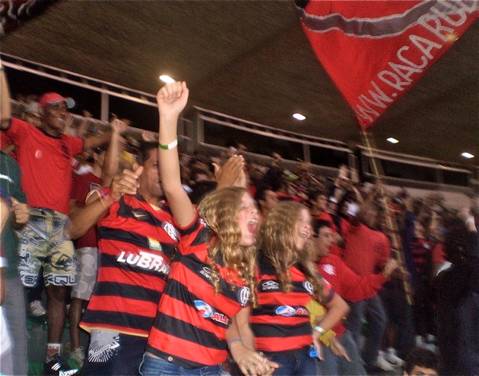
No amount of wind and rain can divert the true Brazilian from their passionate yet frenzied futebol-watching ways. Your everyday Brazilian transforms, whether in attendance at Maracaná, the local bar, or a friend’s living room. This truth is most intensely evident at Maracaná, where face-painted, jersey-clad, drum-beating, obscenity-shouting, song-singing, flag-waving maniacs fill the enormous 2014 FIFA World Cup stadium for games held in Rio.
Tellingly, I don’t have much of a choice as to which team my focus lies. Upon arrival in Rio, I quickly learned that indifference is not an option; everybody must have a team. And as a newcomer, that I’m a Flamengista (supporter of the Flamengo futebol team) was determined quickly by the first Brazilian friends I made. Or maybe our friendship was established quickly after I apathetically affirmed Flamengo’s global superiority. To deny my growing love for the team would be difficult at this point, however. Also tellingly, my friends might disown me if I discuss futebol without mentioning the greatest team ever: MENGÃO.
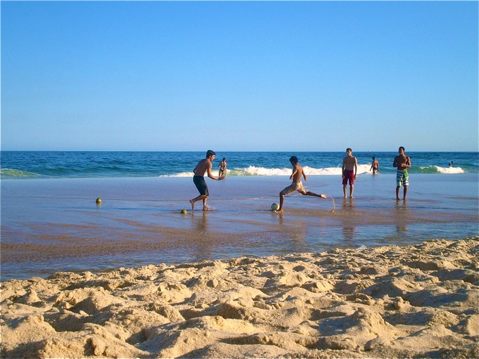
To give some sort of idea of how important Flamengo is to the area of Rio where I live, let me describe its importance in relation to Rocinha, Rio’s biggest favela, where Flamengo is the popular team. Flamengo graffiti is everywhere. People who wear Flamengo jerseys are quite stylish. Before, during, and after games, fireworks set off from many a rooftop add noisy, illuminated explosions to the already festive atmosphere. As if the collective shouting, chanting, and hollering resonating from the tightly-packed houses throughout the hillside weren’t enough to express the community’s excitement.
And this is just one community, which lies on the opposite end of Rio from the stadium Maracaná. Every community between is just as swept up in the happenings of futebol, regardless of the favored team.
But after more than a few months of following futebol more closely than I have ever followed a sport before in my life, I’m still a little fuzzy on who’s playing whom and why. Every time Flamengo loses, I feel like maybe the end is coming. This is especially reinforced because everybody acts like it’s the end of the world. But Cariocas will never be without futebol. Actually, according to one lifelong avid Flamengista, Igor Barbosa da Silva, the world of futebol stops for a difficult, boring “long break” of two weeks in June, after the World Cup.
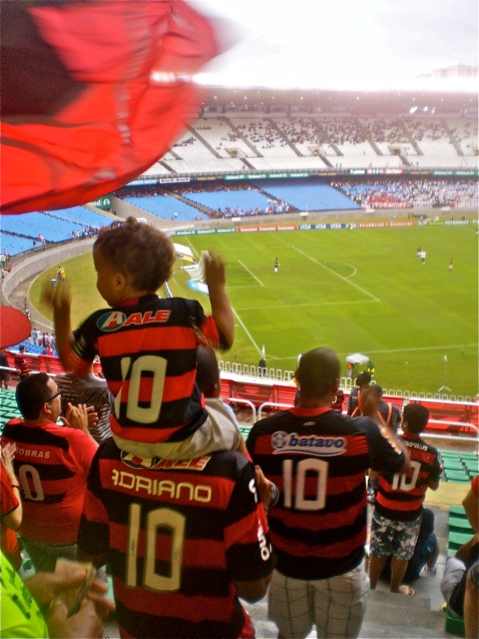
The rest of the year is complicated by a variety of concurrent competitions. Here’s my best shot at a brief explanation: First, we’ve got the State Championships. Each of Brazil’s 26 states has many teams within. Because of the massive size of the country, rivalries are generally more intense between teams within the same state or even the same city. The months from January to the beginning of May are spent determining the best team in each state. Just last week, Botafogo beat Flamengo in the final of the Campeonato Carioca, or the state of Rio de Janeiro Championship, for 2010. (Flamengo won the previous three years.)
But to guess that Flamengo’s loss meant that they wouldn’t be playing again for a while was to err. They’ve played three times in the short period since; the Copa do Brasil and the Campionato Brasileiro, both nationwide competitions, and the Copa Libertadores, which is continental, are also occurring.
The Copa do Brasil, or the Brazil Cup, includes 64 teams from all 26 Brazilian states. Competing clubs are the 54 highest-placed from the State Championships and the 10 highest-placed in the Brazilian Football Confederation (CBF) rankings. The Copa do Brasil is, in a way, the most unpredictable, exciting nationwide competition. It occurs in knockout rather than point accumulation format, allowing traditionally unsuccessful teams to advance based on random good games. Furthermore, because the winner automatically gains a spot in the upcoming continental competition, Copa Libertadores, it is disqualified from competing in the next Copa do Brasil. In other words, no club can win twice in a row, and the competition is impossible to dominate consistently.
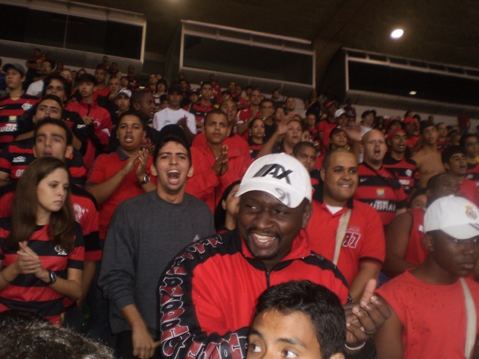
The Campionato Brasileiro, or the Brazilian Championship – currently in its early stages – is an entirely different competition. It is the most inclusive nationwide competition, allowing both popular and unknown, thriving and unsuccessful teams, from both Brazil’s biggest cities to its interior, countryside regions to compete. The competition is divided into four tiers, or Séries. Séria A is between the most prominent teams, including Flamengo, others from Rio and São Paulo, Brazil’s biggest cities. (Teams from São Paulo have traditionally dominated the Campionato Brasileiro.) Last night, Maracaná hosted a game between Flamengo and São Paulo, which ended in a tie. Because the Campionato is in its early stages, the event was relatively peaceful.
And then we have the Copa Libertadores – the continental (plus Mexico) championship. This is the Latin American correspondent to the European Cup. It occurs in six stages, spanning from early February to June or July. The winner qualifies for the FIFA World Cup. Each country determines which teams compete in the Copa Libertadores differently. In Brazil, the top four teams of the Campionato Brasileiro and the champion of the Copa do Brasil compete.
So with all of these various concurrent competitions, Rio’s futebol teams are kept constantly busy. Four clubs, Botafogo, Fluminense, Vasco da Gama and Flamengo, are primarily responsible for futebol drama in Rio. Major rivalries exist in all ways imaginable. I’m not just talking about rivalries between cities (for instance, Rio teams versus São Paulo teams,) and rivalries between teams within the same city (for instance, Flamengo versus Fluminense). I’m talking about rivalries between cheering clubs within the cheering sections of each team.
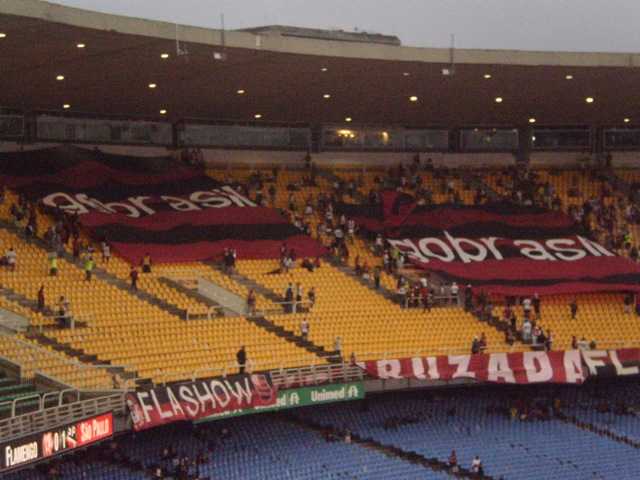
Taking these ridiculously complex, multi-level rivalries into account, it’s easy to imagine why Maracaná is often the locale of large-scale fights. The area around the stadium, according to da Silva, is a frequent “war zone.” Sidewalks are torn up, as rival fans “throw chunks of pavement at each other” from behind and under bridges, walls meant to protect private property, and trees. It’s not uncommon to see hoards running for either for their lives or for the “guerra” toward the end of a good game.
But the competition and rivalries aren’t all the futebol means to Cariocas. Equally important is Carioca love for any activity involving a futebol. Numerous clusters of humans bouncing balls around constantly occupy the beach and the streets. Children learn from an early age to handle the ball with fancy footwork. In general, said Carioca children are also socialized from birth to worship a specific team.
As for the competitions, watch out for Brazil in upcoming futebol news. To ensure accuracy, view the situation using Brazilian futebol goggles: Take whatever snippets make the international media stream, and imagine them as common knowledge that emotionally effects hundreds of thousands of surrounding people. If that’s not culturally defining, I don’t know what is.



